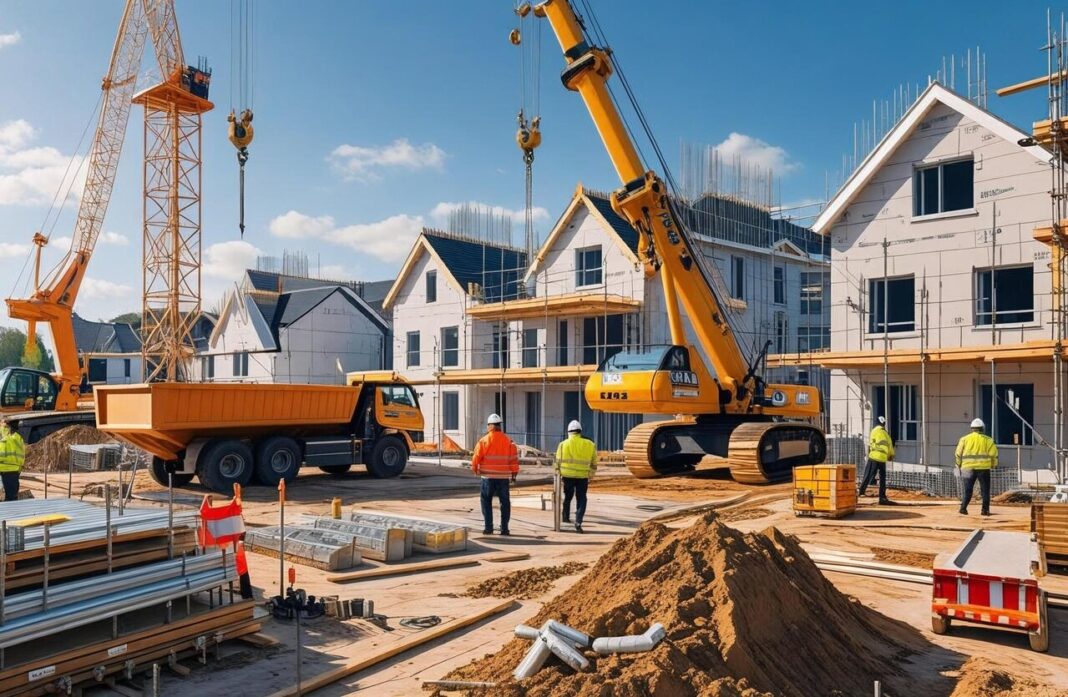Britain’s construction sector saw a modest contraction in May as output fell by 0.6%, ending a three-month run of growth, according to the latest figures from the Office for National Statistics (ONS).
The dip in monthly output was driven entirely by a decline in repair and maintenance activity, which dropped by 2.1%.
Within that, non-housing repair and maintenance fell by 2.4%, while private housing repair and maintenance was down 1.8%.
By contrast, new construction work continued to strengthen, rising 0.6% in May, underlining a measure of resilience in the face of broader economic uncertainty and ongoing challenges in the labour and materials markets.
MONTHLY SLOWDOWN
Of the nine construction sectors tracked by the ONS, five recorded declines in May, with maintenance-focused segments weighing most heavily on the headline figure.
Despite the monthly slowdown, the broader trend remains positive. Total construction output rose by 1.2% in the three months to May 2025, driven by growth in both main segments. New work was up 0.9%, and repair and maintenance increased 1.5% over the three-month period.
The figures reflect a mixed picture for an industry that has faced persistent headwinds in recent years, including high borrowing costs, skills shortages and inflation in materials pricing.
SOFT PATCH
And analysts said the latest data suggests a soft patch in May rather than a reversal of the underlying recovery.
One senior economist at a leading UK bank told Property Soup: “While the May data shows a pullback, especially in maintenance-heavy areas, the continued rise in new work is encouraging.
“It suggests that investment appetite in key sectors is holding up, even if some households and local authorities are pulling back on upkeep spending.”
The construction sector – which accounts for around 6% of UK GDP – is closely watched as a barometer of wider economic health.
The Bank of England is expected to begin cutting interest rates later this year, which could support further momentum in the second half of 2025.
CHALLENGING TIMES

Neil Leitch, Managing Director of Development Finance at Hampshire Trust Bank, says: “A decline in new private housing highlights how difficult it has become for developers to bring forward much-needed homes.
“It underlines the scale of the challenge in navigating a planning process that is too often slow, inconsistent and under-resourced.
“Planning remains the single biggest obstacle to delivery. Local authorities continue to struggle with limited resource, capacity and consistency.
“The challenge is not ambition. It is the reality of a system that cannot keep pace with demand. Planning authorities are now determining fewer applications than they were six or seven years ago, which shows that performance has deteriorated, not improved.”
NO HOMES GUARANTEE
And he adds: “It is also important to recognise that approvals alone do not guarantee homes will be built. Even when consent is secured, developers must still contend with rising costs, labour shortages and viability pressures that can derail progress.
“We know what the issues are. This is not about political direction. It is about ensuring the system functions effectively on the ground. Until that happens, housing output will remain well below the level needed to meet demand.”
ONGOING PRESSURES

And Paragon Bank’s Head of Vendor Terry Lloyd says: “The latest ONS data showing a modest decline of 0.6% in UK construction output highlights the ongoing pressures facing the sector – from skills shortages to persistent supply chain issues and material costs.
“This fall relates specifically to repair and maintenance, however, while new work was more positive, up by 0.6%.
“Despite some of these persistent headwinds, appetite for finance to invest in new equipment and modernise operations remains strong among SMEs.
“It appears many firms are taking a long-term view, using this period to futureproof their businesses.”










